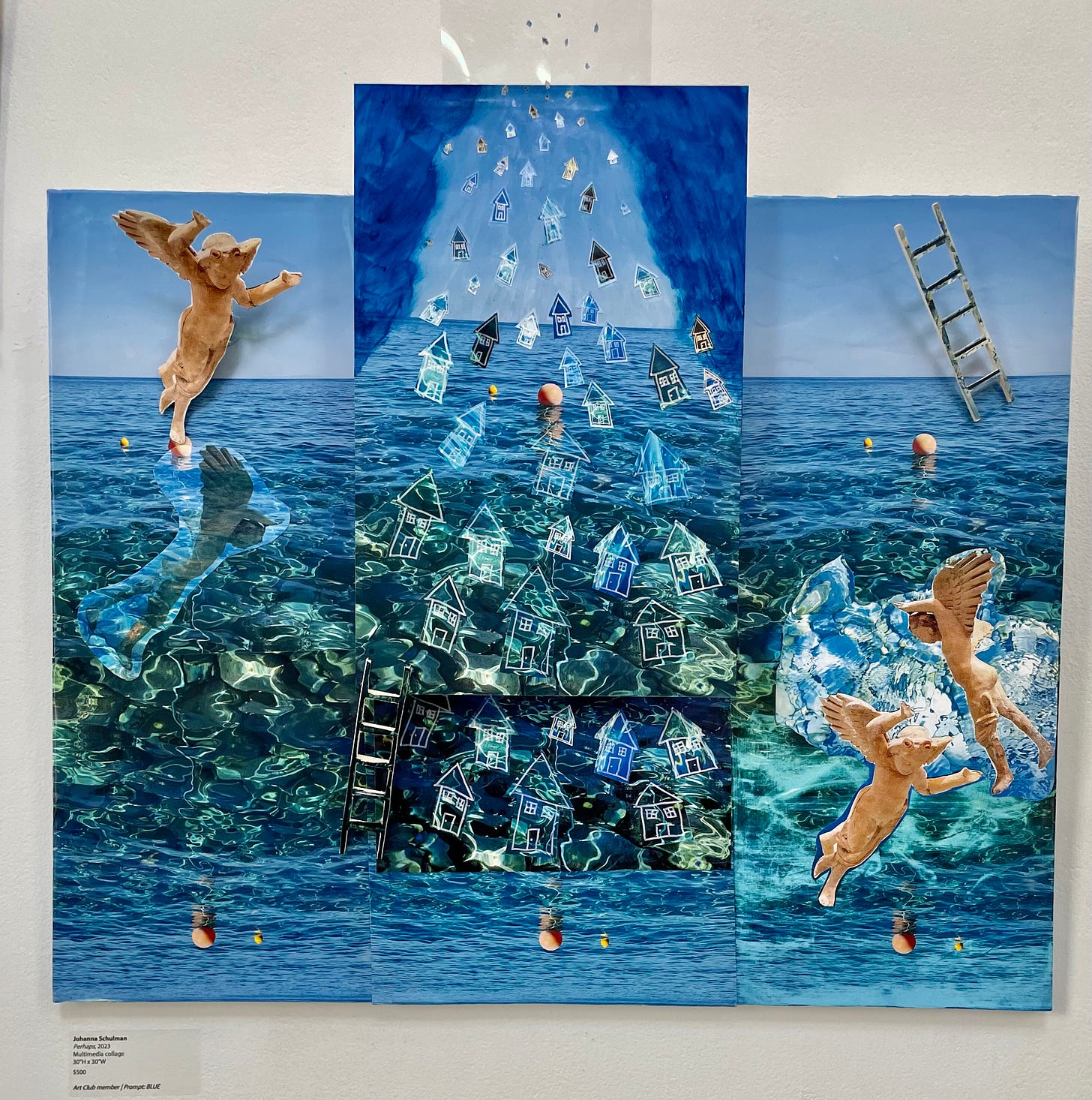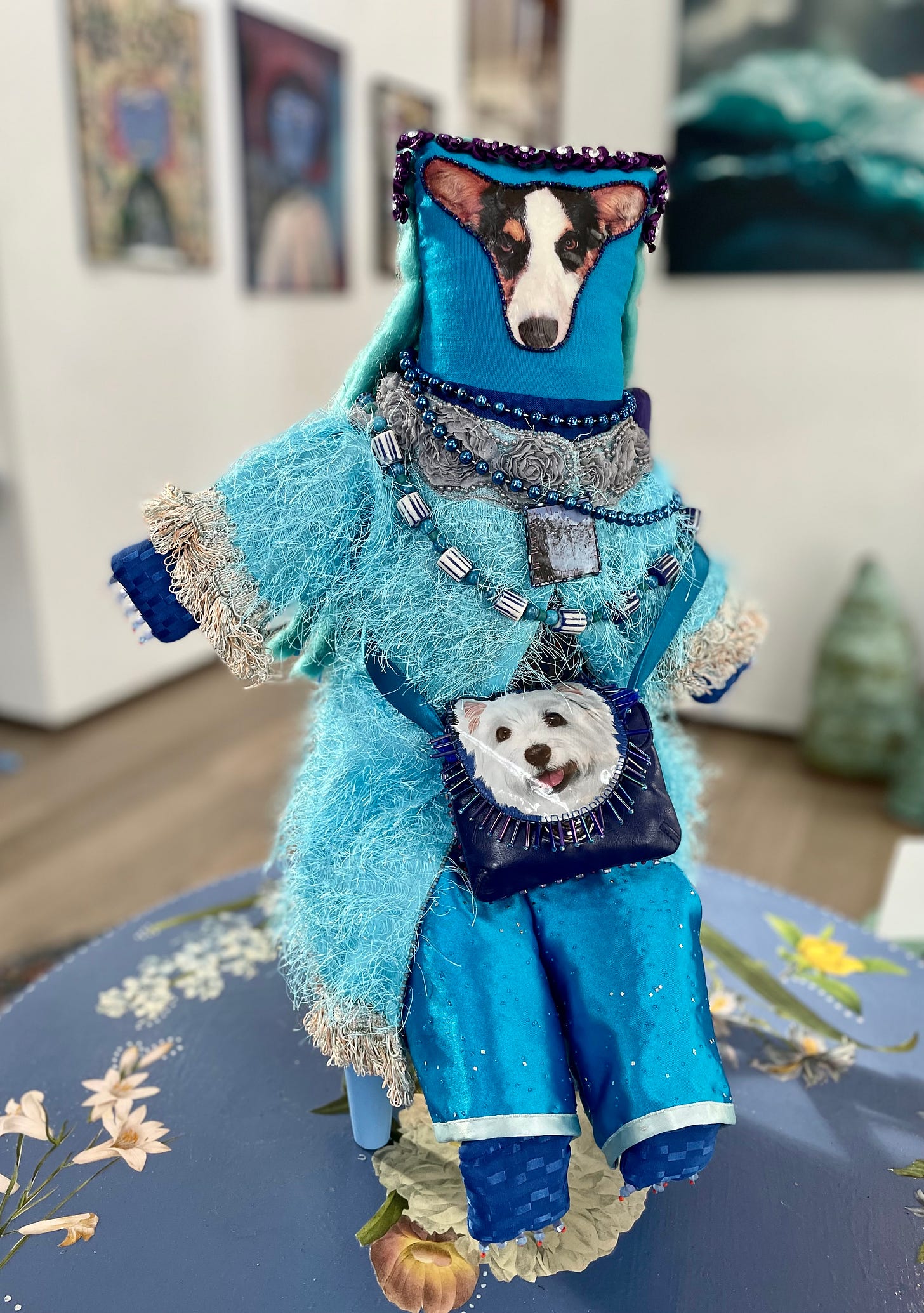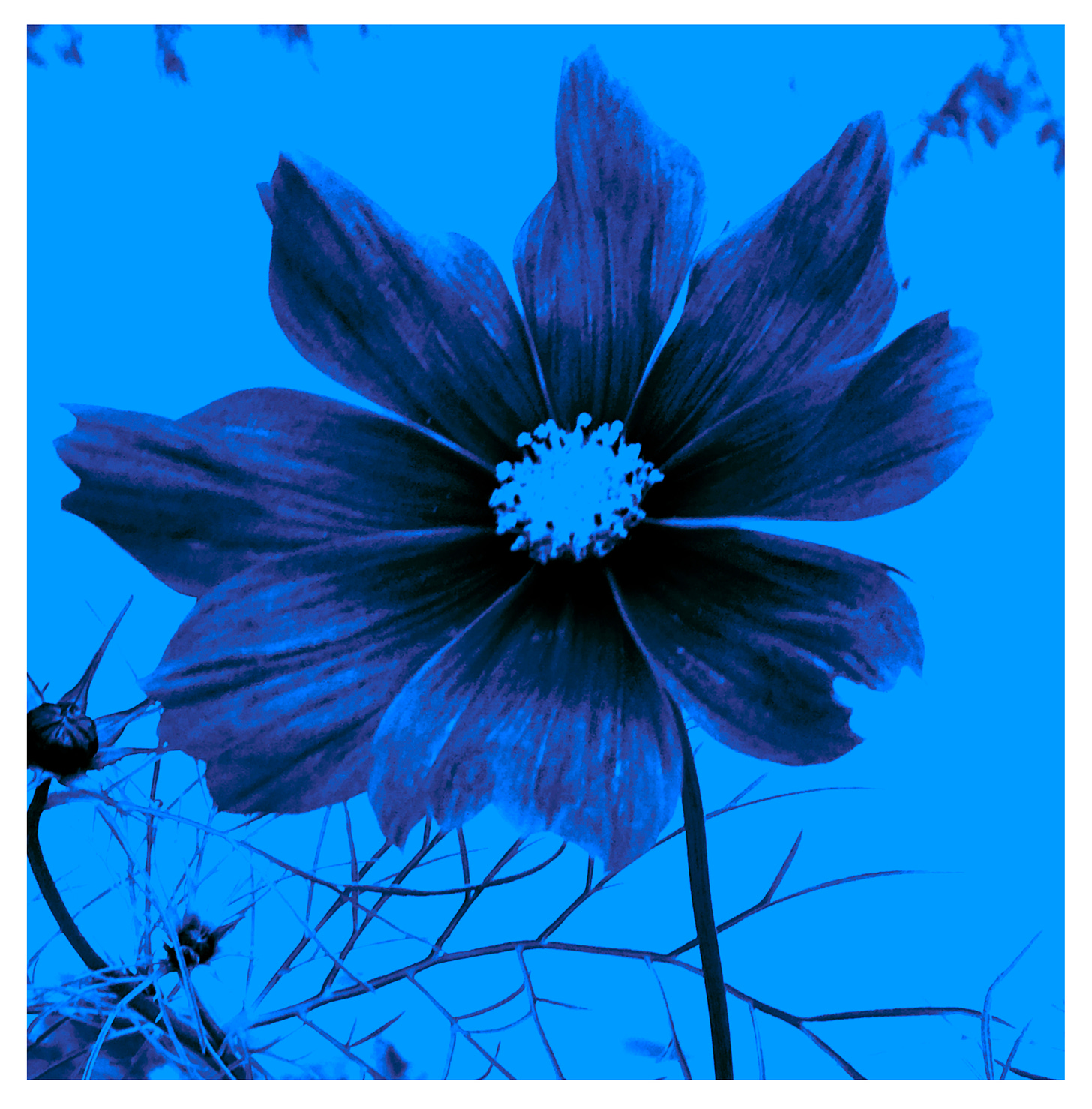On sunny fall days, the red and yellow leaves against the blue sky open a chute of joy in my body. I can be in a big grump on a rainy day, then walk into an exhibition and be buoyed by a shot of red. I saw Helen Frankenthaler’s 1993 woodcut “Freefall,” which is six-and-a-half-feet tall, in “No Rules,” a 2017 print show at Clark Art Institute. I fell into its luminous blue. How to describe such an experience? I came up with “ravishing jolt.” It’s the only color description I’ve written that stays with me.
What is blue to you?
It’s my soul’s hue. I don’t know why that electromagnetic wavelength sings so tenderly to me. Maybe it’s just the way my retina and nervous system are wired; all blues have a distinct effect on my physiology. Orange, its complementary color, can push me away, while blue seems to open and receive me. (Although together, ooh la la!).
Seeking a fix, I went to see “Blue” at Somerville Museum, organized by community curator Martha Friend. Martha is a blue lady, too – if you’ve been by her Highland Avenue home in Somerville, maybe you’ve seen her “Sapphire City“ installation in the yard, crafted largely from found blue glass.
The exhibition is not unlike Martha’s house, brimming with so-called high and low art. Some of it’s great, some of it’s kitschy. Some is both, like Marcella Stasa’s “My Life in Blue, Cont’d” a figurative soft sculpture with a dog’s head decked out in a frilly, arctic blue robe and shiny cerulean pants – tones that ring like bells.
Johanna Schulman’s multimedia collage triptych “Annihilation is not Inevitable” depicts climate apocalypse, but in the third, more hopeful panel, “Perhaps,” angels and a ladder (Jacob’s?) appear. Even with the bitter reality of climate change as a subject, this collage is infused with motion and light. The sea blue and turquoise of the water are what my father used to call “bracing” when he went for an ocean swim.

As curator, Martha provides didactics about indigo and its connections to the slave trade, and about the Blues, a term that possibly links to the use of indigo in certain African mourning ceremonies, or maybe the “blue devils,” the effects of detoxing from alcohol.
Back in the day, blue pigments made from precious stones were rarer than gold. Egyptians ground lapis lazuli to paint the dead bodies of kings. Minerals like lapis were often reserved for the most precious imagery, like the Virgin Mary’s veil. (There’s actually a Marian blue, which has a stony, ocean blue cast).
Painter and art philosopher Wassily Kandinsky, in “On the Spiritual in Art,” wrote, “The deeper the blue becomes, the more strongly it calls man towards the infinite, awakening in him a desire for the pure and, finally, for the supernatural … Blue is the typical heavenly color. Blue unfolds in its lowest depths the element of tranquility. As it deepens towards black, it assumes overtones of a superhuman sorrow.”
In “Blue,” Richard Curran’s inkjet print “Blue Cosmo” holds some of that. It’s that stony marian blue, deeply shadowed, on a cornflower blue ground. Curran made it from a photo he took in Paris during a 2018 stay there with his wife, Sharon Harner, who died the following year. “This flower has come to represent something of my late wife’s spirit,” he writes in wall text.
The blue flower is a motif of yearning and metaphysical sorrow that reaches back to German romanticism. Writer Joseph Freiherr von Eichendorff (1788 - 1857) perhaps coined the notion in his poem, “Die blaue Blume” about unfulfilled longing. But “unfulfilled” isn’t quite the word, because Curran’s colors – and indeed romanticism – are super-saturated. It’s more about how longing fills us.
Kandinsky goes on about blue, “As it tends toward the bright, to which blue is, however, less suited, it takes on a more indifferent character and appears to the spectator remote and impersonal, like the high, pale-blue sky.”
I disagree. Light blue can drop from the heavens through my eyes and into my chest, awakening me. In shadow or in light, blue deepens and expands. Indeed, blue may be the best color at simultaneously holding shadow and light. It makes sense, then, that blue is the color of the throat chakra, called Vishuddha, a Sanskrit word meaniing “pure” or “purification.” It’s the communication chakra, the gateway between mind and body, and how we express who we are – shadow, light, and all.
That mystical quality reminded me of Emily Dickinson. I asked my friend Larry O’Brien, a Dickinson scholar, what he knows about blue in her poems. He sent me this one, number 756:
One Blessing had I than the rest
So larger to my Eyes
That I stopped gauging—satisfied—
For this enchanted size—
It was the limit of my Dream—
The focus of my Prayer—
A perfect—paralyzing Bliss—
Contented as Despair—
I knew no more of Want—or Cold—
Phantasms both become
For this new Value in the Soul—
Supremest Earthly Sum—
The Heaven below the Heaven above—
Obscured with ruddier Blue—
Life's Latitudes leant over—full—
The Judgment perished—too—
Why Bliss so scantily disburse—
Why Paradise defer—
Why Floods be served to Us—in Bowls—
I speculate no more—
Hmmm. “Ruddier blue,” obscuring the blues of heaven? What does she mean?
“I see a pun at the end of the third stanza—'Supremest Earthly Sum,’” Larry wrote to me. “‘Sum’ is Latin for I am, so the greatest value in the Soul is ‘I Am,’ which, come to think of it, is how Yahweh introduces himself to Moses. … It seems that everything pales in comparison to the I AM within.”
Heaven is paler than the blue of “I am.” Oh, Emily, I’m swooning! How radical, how sacrilegious. “I am” is, of course, more than me. It is existence itself. It is expression, it’s the Word, it’s the Blues. It echoes through the universe in a ravishing jolt.






Exquisite!!!!!
Thanks for this. Blue is my favorite color. I keep trying to put it in my paintings. It affects me spiritually and emotionally. Comforting yet mysterious